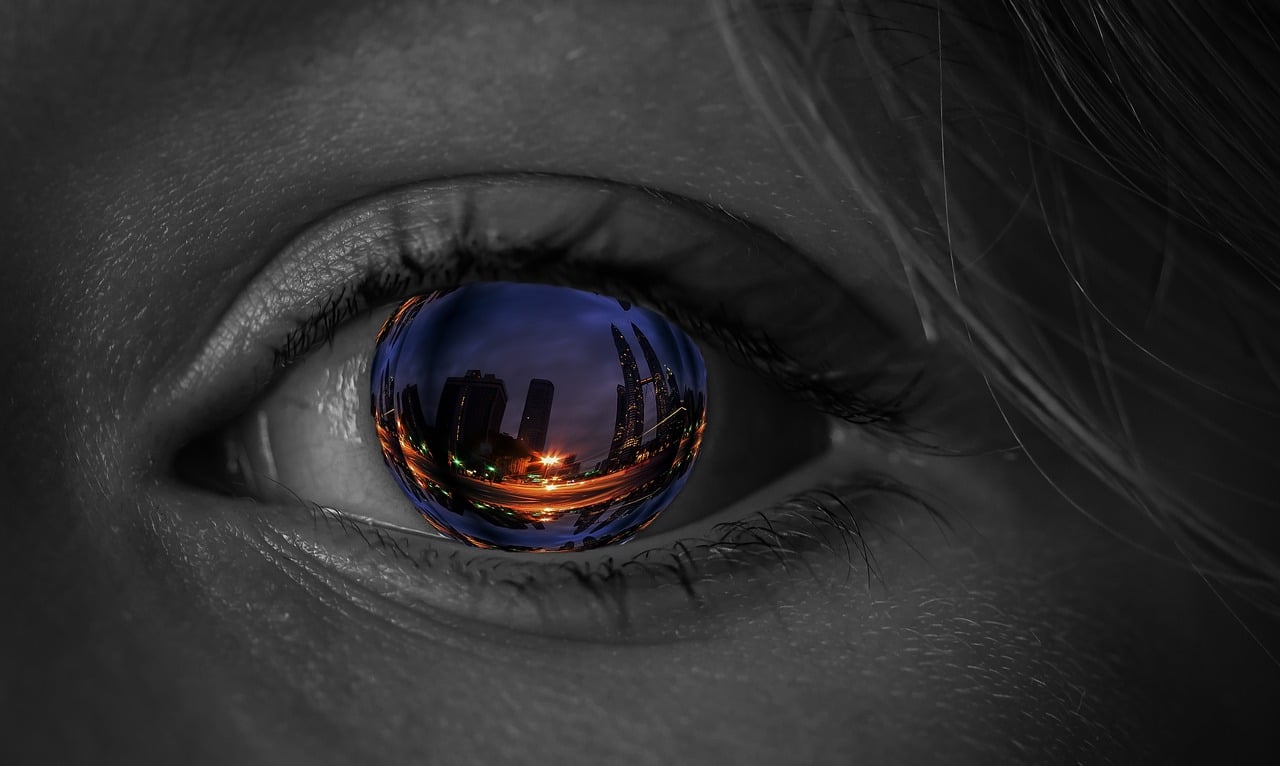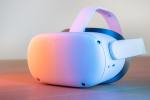Virtual Reality: Exploring New Frontiers in Immersive Technology

July 18, 2023
Virtual Reality (VR) has undergone rapid advancement, revolutionizing our interaction with technology and paving the way for new possibilities across various industries. From gaming and entertainment to education and healthcare, VR has proven its potential to provide immersive experiences that blur the boundaries between the physical and digital realms. As we move forward, the future of virtual reality promises even more remarkable advancements, pushing the limits of what is achievable. In this article, we delve into the future of VR, exploring the exciting new frontiers that lie ahead for this transformative technology.
Zyber Review – Explore New Dimensions with the Best Virtual Reality Accessories
The Social Impact of Future Virtual Reality Development
As virtual reality continues to advance, its impact on society will extend far beyond entertainment and gaming. The future development of virtual reality holds great potential for transformative social change, revolutionizing various aspects of our lives and fostering new opportunities for communication, empathy, and global connectivity.
Communication and Connection
Virtual reality has the power to reshape the way we communicate and connect with others. In the future, virtual environments will enable us to gather and interact in immersive social spaces, transcending geographical boundaries. This will allow people from different parts of the world to come together, fostering cross-cultural understanding and empathy.
Virtual reality can also bridge the gap between loved ones separated by distance. Imagine being able to share experiences and create memories with family and friends as if you were physically present, regardless of where they are in the world. Virtual reality will provide a sense of togetherness and intimacy, mitigating the limitations of physical separation.
Cultural Preservation and Heritage
Virtual reality has the potential to preserve and showcase cultural heritage in unprecedented ways. Museums and historical sites can create immersive VR experiences that transport visitors back in time, allowing them to explore ancient civilizations or witness significant historical events. This technology will contribute to the preservation of cultural artifacts, languages, and traditions, ensuring that they are accessible to future generations.
Moreover, virtual reality can promote cultural exchange by enabling individuals to experience different cultures firsthand. Users can immerse themselves in traditional ceremonies, visit landmarks, and interact with locals, fostering cultural appreciation and understanding.
Education and Training
Virtual reality’s impact on education and training will be profound. As the technology evolves, immersive VR experiences will revolutionize the way we learn, offering hands-on and interactive educational content. Students can explore complex concepts through realistic simulations, accelerating learning and improving retention.
Virtual reality will also provide valuable training opportunities in various industries. From vocational skills training to professional development, VR simulations will allow individuals to gain practical experience in safe and controlled environments. This will democratize access to high-quality education and training, empowering individuals from all backgrounds to acquire new skills and pursue fulfilling careers.
Empathy and Social Awareness
Virtual reality has the potential to enhance empathy and foster social awareness. By immersing users in the lived experiences of others, VR can help bridge gaps of understanding and promote empathy for diverse perspectives. Virtual reality documentaries and experiences can shed light on social issues, enabling users to see the world through different lenses and inspiring social action.
Virtual reality can also contribute to the understanding and acceptance of marginalized communities. Through immersive experiences, individuals can gain insight into the challenges faced by others, promoting inclusivity and equality.
Environmental Impact and Sustainability
Virtual reality can play a role in reducing our environmental impact. By creating virtual meeting spaces and virtual conferences, businesses can minimize the need for travel, thereby reducing carbon emissions. Remote collaboration in virtual environments can enhance productivity while reducing the strain on transportation infrastructure and resources.
Additionally, virtual reality can be utilized for environmental education and advocacy. Immersive experiences can raise awareness about environmental issues, fostering a sense of responsibility and inspiring sustainable actions.
The Best VR Headsets You Can Buy In 2023
What it’s in store?
Enhanced Immersion
The future of virtual reality will bring about a whole new level of immersion, engaging all our senses to create truly lifelike experiences. In addition to visual and auditory stimuli, advancements in haptic feedback will enable users to feel physical sensations within the virtual environment. Haptic gloves, exoskeletons, and body suits equipped with sensors will provide precise and realistic feedback, allowing users to touch, feel textures, and experience the weight and resistance of virtual objects. Such enhancements will create a more immersive and tactile virtual experience, making it challenging to distinguish between the physical and digital realms.
Furthermore, innovations in olfactory technology will add scent capabilities to virtual reality, immersing users in a multi-sensory environment. Imagine stepping into a virtual forest and being able to smell the scent of fresh pine or experiencing the aroma of a gourmet meal during a cooking simulation. By incorporating scent into the VR experience, immersion will be further enhanced, delivering a more complete and captivating sensory journey.
Augmented Reality Integration
The convergence of Virtual Reality (VR) and Augmented Reality (AR) will shape the future of immersive technology. Augmented reality overlays digital information in the real world, enriching our everyday experiences. By seamlessly integrating AR elements into VR environments, users will enjoy the best of both worlds.
In the future, we can expect VR headsets to incorporate outward-facing cameras, enabling users to see and interact with their real environment while still immersed in the virtual world. This integration will allow for more seamless transitions between the physical and virtual realms. For instance, users can enjoy a virtual gaming experience while still being aware of their surroundings, preventing accidents or collisions.
Moreover, AR integration will have practical applications in various industries. From virtual architectural visualizations overlaid onto real construction sites to virtual training scenarios within actual workplaces, the combination of AR and VR will provide valuable insights and real-world context. This integration will unlock new opportunities for productivity, safety, and efficiency in fields such as engineering, construction, and manufacturing.
Social and Collaborative Experiences
Virtual reality has the power to connect people in ways that were previously unimaginable. In the future, VR will enable even more immersive social interactions, transforming the way we connect with others and fostering collaboration across geographical boundaries.
Advancements in avatar technology will enable highly realistic and customizable virtual representations of ourselves. Realistic facial expressions, body movements, and even eye-tracking capabilities will contribute to more authentic and lifelike interactions in virtual spaces. Users will be able to engage in meaningful conversations, read subtle social cues, and establish emotional connections, replicating the feeling of being physically present with others.
Beyond personal interactions, virtual reality will revolutionize remote collaboration. Instead of static video conferences, virtual meeting rooms will provide dynamic and immersive environments where team members can brainstorm ideas, present projects, and work together on shared virtual whiteboards. This level of collaboration will enhance productivity and creativity, while also reducing travel costs and carbon footprint.
Training and Education
Virtual reality is already making significant strides in training and education, and the future will see even greater integration of VR in these fields. The immersive nature of VR allows learners to gain practical experience in simulated environments, accelerating learning and improving retention.
In healthcare, VR simulations will enable medical students and professionals to practice complex surgical procedures, hone diagnostic skills, and navigate critical scenarios without putting real patients at risk. VR will also provide realistic training for emergency response teams, enabling them to prepare for high-stress situations and make split-second decisions in a safe environment.
In the education sector, virtual reality will revolutionize the way we learn by bringing abstract concepts to life. Students can explore historical events by virtually traveling back in time, interact with virtual specimens in biology, or delve into immersive simulations to understand complex scientific principles. Virtual reality will democratize education, making high-quality learning accessible to all, regardless of their geographical location or economic background.
Therapeutic Applications
Virtual reality’s therapeutic applications will continue to expand, improving the quality of healthcare and mental well-being. VR therapies have already shown promising results in treating a range of conditions, and the future will bring further advancements and new applications.
For pain management, VR can distract patients from discomfort by transporting them to relaxing and engaging virtual environments. By redirecting their attention, virtual reality can reduce the need for pain medication. It offers a non-invasive alternative for chronic pain management.
In physical rehabilitation, VR offers engaging exercises that encourage movement and motivation. Whether it’s relearning motor skills after an injury or assisting with stroke recovery, VR-based rehabilitation can provide personalized and immersive experiences that enhance the recovery process and improve outcomes.
Virtual reality will also continue to play a vital role in mental health treatments. VR therapy offers exposure therapy for individuals with phobias, anxiety disorders, and PTSD. It allowes them to confront and overcome their fears in a controlled and supportive environment. Additionally, VR environments can be tailored to help manage stress, promote relaxation, and improve overall mental well-being.
Now you will be able to use VR in your favorite games.
The future is now
The future of virtual reality holds immense potential for innovation and exploration. Enhanced immersion, augmented reality integration, social experiences, training applications, and therapeutic benefits will shape a new era of immersive technology. As technology continues to advance, VR will become an integral part of our lives. It will transform the way we work, play, learn, and connect. The frontiers of virtual reality are expanding, offering endless opportunities for us to experience and create remarkable virtual worlds. As we step into this future, the possibilities for immersive experiences and advancements in virtual reality are truly boundless.








